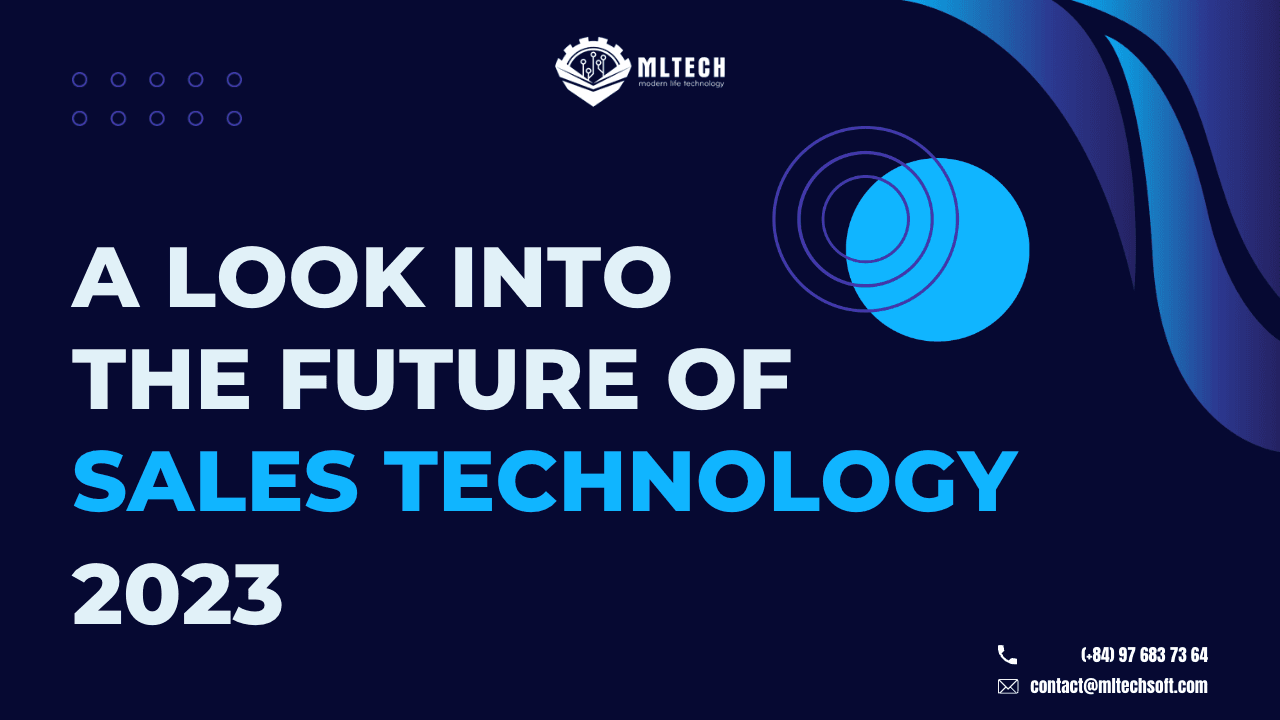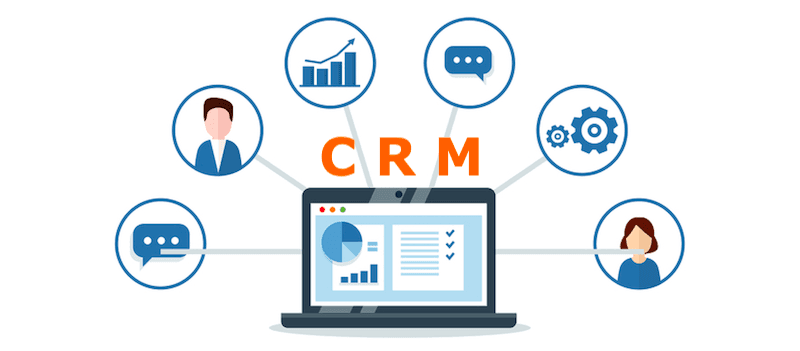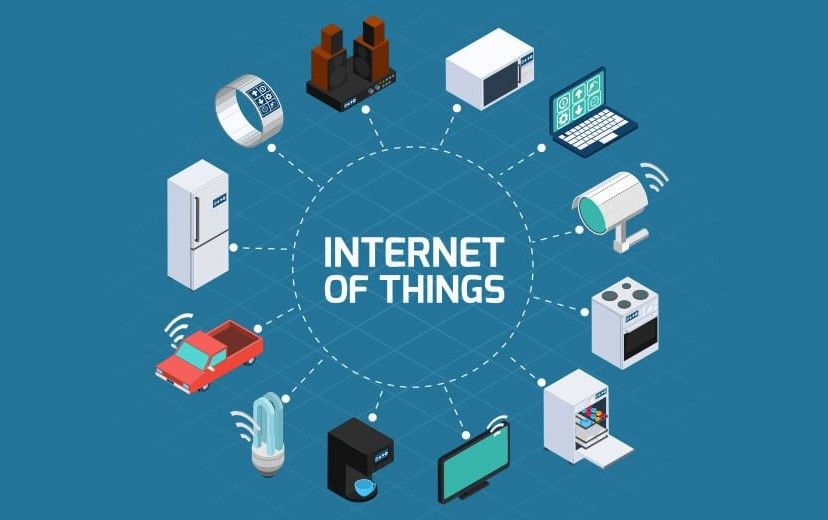Scroll down for more
A Look Into The Future of Sales Technology 2023

As technology keeps getting better and better at a fast rate, the world of sales is changing.
This post gives a glimpse into the future of sales technology by looking at some of the most exciting and promising technologies that are likely to change the way sales are done in the years to come.
We will show some predictions of sales for 2023 and discuss a few sales technologies, as well as the implications for businesses and their customers.
1. The First Predictions of Sales for 2023
As we exit 2022, we find ourselves at an inflection point. We’re in a new era of sales. Business as usual won’t cut it anymore. Entire sales teams must adapt to succeed. In 2023, they’ll be creating more of their own pipeline, qualifying leads, closing deals, and everything in between.
Prediction 1: Coverage is dead. Long live conversion
It suggests that sales strategies will prioritize quality over quantity. Instead of trying to catch as many leads as possible, companies will focus on targeted outreach and personalized marketing.
Prediction 2: The customer expansion trust fund is gone.
It means that companies will focus more on getting new customers instead of relying on a small group of loyal customers for growth. This prediction is in line with the trend of increasing competition in many industries.
Prediction 3: Forecasting accurately requires accountability — at every level
It highlights the importance of transparency and accountability in sales forecasting. In 2023, companies will try to make their predictions more accurate by involving everyone who has a stake in the matter.
Prediction 4: Diverse sales teams will be a market differentiator—if you walk the talk.
Companies will place greater emphasis on diversity and inclusion in their sales teams. The idea that various viewpoints and experiences can boost sales is what's driving this trend.
Prediction 5: Consolidation will rule
Mergers and acquisitions will continue to be a major trend in sales. To stay ahead in a market that is becoming more competitive, companies will try to add more products and services and strengthen their market positions.
2. The elements of a cutting-edge technology sales approach
A "cutting-edge technology sales approach" is a sales methodology designed to help sales teams effectively sell innovative and emerging technologies. Below are some key elements of a cutting-edge technology sales approach:!
Deep Product Knowledge: Salespeople who know a lot about the technology they're selling are better able to explain to potential customers what the product can do for them. They must have a deep understanding of the technology's features, benefits, and use cases.
Market Awareness: A salesperson must understand the competitive landscape and the challenges customers face in the market. When salespeople know how the market works, they can position their product well and help customers solve problems.
Customer Persona Understanding: It's essential to understand the target customer's pain points, preferences, and goals. With this information, salespeople can tailor their sales pitch and messages to meet the needs of each customer.
Consultative Selling: A cutting-edge technology sales approach, is about building relationships with customers and guiding them through the buying process. Salespeople must be able to figure out what their customers need, offer solutions, and offer services that add value beyond the sale.
Strong Communication Skills: Salespeople need to be excellent communicators, both verbally and in writing. They have to be able to explain complicated ideas and technologies in a way that customers who aren't tech-savvy can understand.
Thought leadership: Salespeople who are seen as thought leaders in their field can help potential customers trust them. This can be done by making helpful content, giving talks at industry events, and using social media.
Metrics-driven: A cutting-edge technology sales approach must be metrics-driven. Salespeople need to be able to measure and track their success so they can always find ways to improve.
Relationship Building: Salespeople need to develop strong relationships with customers. This includes understanding their business needs, staying in touch, and providing ongoing support.
Ability to Deal with Objections: When selling cutting-edge technology, you often have to deal with customers who don't want to buy something new or untested. Salespeople need to know how to address concerns and show what the technology can do for the customer.
Continuous Learning: Technology is always getting better, so salespeople need to keep up with the latest changes. This means going to industry conferences, reading industry magazines, and taking part in training and development programs that run all the time.
3. In 2023, the most important sales technology trend will be
3.1. Powerful Customer Relationship Management Systems
Customer relationship management (CRM) systems put all the information about customers in one place. This can help with sales management, marketing campaigns, customer service, teamwork, customization, integration, analytics, and reporting. Businesses can improve their interactions with customers and make better decisions about their sales and marketing strategies when they use a powerful CRM system.

3.2. Smart Methods of Conveying Information
Smart methods of conveying information include chatbots, interactive content, infographics, videos, and social media. These methods can help businesses talk to customers better, get them more involved, shorten the time it takes to respond, and build stronger relationships with them. ChatGPT is an example of a chatbot that can provide 24/7 customer support.

3.3. Mobile Solutions
Mobile solutions are technologies and apps that are made for devices like smartphones and tablets. Examples include mobile apps, mobile websites, and mobile payment solutions. Mobile solutions are made so that users can do a lot of different things, like play games, get work done, use social media, and pay for things. Mobile solutions are optimized for small screens, touch-based navigation, and slower network speeds.
3.4. Voice Recognizers & Call Analytic Tools
Voice recognizers and call analytics tools are pieces of technology that look at voice data from phone calls and try to figure out what it means. Voice recognizers use speech recognition technology to turn voice data into written text, while call analytic tools use machine learning algorithms to analyze voice data in real time.
Both tools can help businesses find patterns and trends in how customers act, figure out how customers feel, and learn more about their experiences. These tools are especially helpful for businesses whose main way of talking to customers is through phone calls.
3.5 Connected Devices and the IoT
Connected devices and the Internet of Things (IoT) refer to technologies that enable devices to communicate and exchange data with each other over the internet. Connected devices include devices such as smartphones, smartwatches, and smart home devices. IoT is the infrastructure that makes it possible for devices to talk to each other and share data.
This infrastructure includes cloud computing, data analytics, and communication protocols. These technologies have a wide range of applications, including smart homes, wearables, healthcare, transportation, and manufacturing. As the number of connected devices and IoT apps grows, though, businesses need to put in place strong security measures to protect themselves from cyber threats.

3.6. Augmented and Virtual Reality
Augmented and Virtual Reality (AR/VR) are technologies that create immersive digital experiences for users. AR adds digital information to the real world, while VR creates a digital environment that you can fully immerse yourself in. AR/VR have applications in gaming, entertainment, education, healthcare, and more.
However, implementing these technologies can be expensive and require specialized hardware and software, and there are also concerns about user safety and privacy. Overall, AR/VR are powerful technologies that offer many benefits, but businesses need to be aware of the challenges involved in implementing them.
4. Final Thoughts
The future of sales technology is promising and exciting. Businesses can use a number of cutting-edge technologies to improve their sales processes and make the customer experience better.
For businesses to get the most out of these technologies, they need to carefully look at their needs and skills and pick the technologies that fit their goals and resources the best.
Get our blog
Want the latest and greatest from our blog straight to your inbox? Chunk us your details and get a sweet weekly email.
Read more in our blog

Project Management
The Impact of Dynamic Pricing on Customer BehaviorExplore the impact of dynamic pricing on customer behavior and learn how to implement effective pricing strategies.

Project Management
Focus in Scrum: Keeping Your Team on TrackDiscover effective strategies to maintain focus within your Scrum team, overcome common challenges, and boost productivity.

Project Management
Key Metrics for Mobile App SuccessDiscover the essential metrics for mobile app success, from user acquisition and engagement to monetization and performance.
MLTECH SOFT